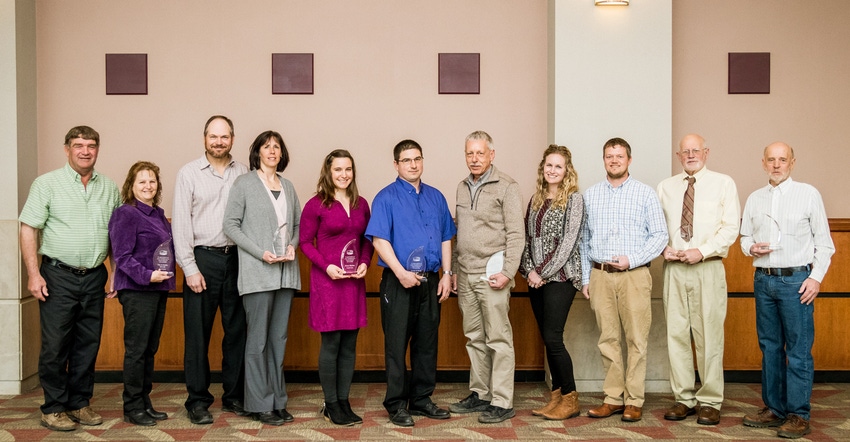
The Michigan Agriculture Environmental Assurance Program has come a long way.
Eighteen years ago, it was hard to imagine farmers eager to invite government officials onto their farms. But a program began forming in the late 1990s after nonfarming neighbors started to take issue with normal agricultural practices. The livestock industry was particularly under scrutiny, and government regulations were looming.
Stakeholders, including the Michigan Farm Bureau, the Michigan Department of Agriculture, Michigan State University, commodity groups and others, went to work to devise a way to assist farmers to be voluntarily compliant with best management practices.
In 2001, MAEAP was launched. It was implemented as a voluntary environmental program to work individually with farmers to identify and prevent environmental risks on farms, which primarily were groundwater and surface water contamination at that time.
In March 2002, MAEAP granted its first verification in the livestock system to Fander Farms in Calhoun County — a farm that still is verified today. The family farm was one of 13 honored March 21 for maintaining its verification status since the program’s beginning.
It was part of a grand MAEAP celebration. More than 500 farmers, commodity representatives, and agriculture and conservation organizations gathered at the Lansing Center to recognize the 5,000 verifications the program will achieve this year.
The milestone drew accolades from Gov. Gretchen Whitmer and Sen. Debbie Stabenow in videos, and guest speakers included Michigan Department of Agriculture and Rural Development Director Gary McDowell and� USDA Natural Resources Conservation Service Chief Matt Lohr, who took that position four months ago and is a fifth-generation farmer from Virginia.
Lohr said he serves through the lens of a hometown farmer — the first full-time farmer since the 1990s to hold that position. “When I wake up and go to work, this is what I got in mind, because I am one of you.” Lohr said.
He went on to tell the story of Roger Bannister and how for 75 years, the four-minute mile was thought to be impossible.
“Doctors said the human heart would have to beat so fast in someone’s chest that it would explode, and a person would die,” Lohr said. “Not only did they think it was impossible, they thought it was going to kill you. That was the belief and the thinking for 75 years until 1954 when Roger Bannister broke that barrier.”
Lohr said he was intrigued and wondered if it took 75 years for the first person to run a four-minute mile, how long was it before a second person would run a four-minute mile?
“I was astonished to learn that it only took 49 days before it happened again,” he said.
“Throughout the rest of that year, there were seven other runners to accomplish the feat. Now, what could have possibly changed, where it took 75 years for the first time, and seven weeks for the second time?” he asked.
Pointing to his head, he said, “That is what changed. People saw that it could happen, and when they saw it, they began to believe, and when they believed, their bodies responded accordingly. Today, there are over 5,000 runners around the world that have broken this barrier.”
The same holds true for MAEAP, he said. “It was thought to be impossible by so many, but the right stakeholders came together to form this program,” Lohr said. “We’ve seen that it can happen. There are so many other states that are looking at Michigan as the example, the role model, for how they can implement similar programs in their states.”
Lohr said NRCS has been proud to support MAEAP. As a partner, the aboveground fuel and chemical storage containment component of MAEAP received federal dollars.
“Through EQIP dollars, we have dedicated dollars to help producers that have only one or two practices left to finish verification,” Lohr said.
NRCS has 240 contracts with producers, he said, supplying $4.7 million for field storage since 2013.
“More collaboration and less conflict are based on trust,” Lohr said. “NRCS has the same vision, being voluntary and proactive in conservation efforts to make sure that we’re ahead of the curve to sustain viability and profitability.”
Today, MAEAP has expanded, evaluating various aspects of farms based on four systems: farmstead; cropping; livestock; and forest, wetlands and habitat.
The 5,000-farm verification goal was set when MAEAP was codified into law in 2011.
For information about MAEAP or the 5,000th verification celebration, visit MAEAP.org or call Joe Kelpinski at 517-284-5608.
About the Author(s)
You May Also Like






